Affiliate links on Android Authority may earn us a commission. Learn more.
Galaxy Note 8 vs Galaxy S8 quick look
Samsung’s smartphone range has grown larger, in more ways than one, with the launch of the Galaxy Note 8 yesterday, and at first, the phone looks a lot like the Galaxy S8 family. Samsung has often been criticised for not differentiating the Note series from the Galaxy S series. With the Note 8, at first glance, it seems the company has made some of the same decisions as in the past.
More Note 8 coverage:
Next to each other, the Galaxy Note 8 vs the Galaxy S8 look almost identical apart from a larger display, but as you dig into it, there’s enough differences that set these two devices apart.
What’s new with the Galaxy Note 8 and how does it compare versus the Galaxy S8 and Galaxy S8 Plus? Let’s take a closer look.
Galaxy Note 8 vs Galaxy S8: Design
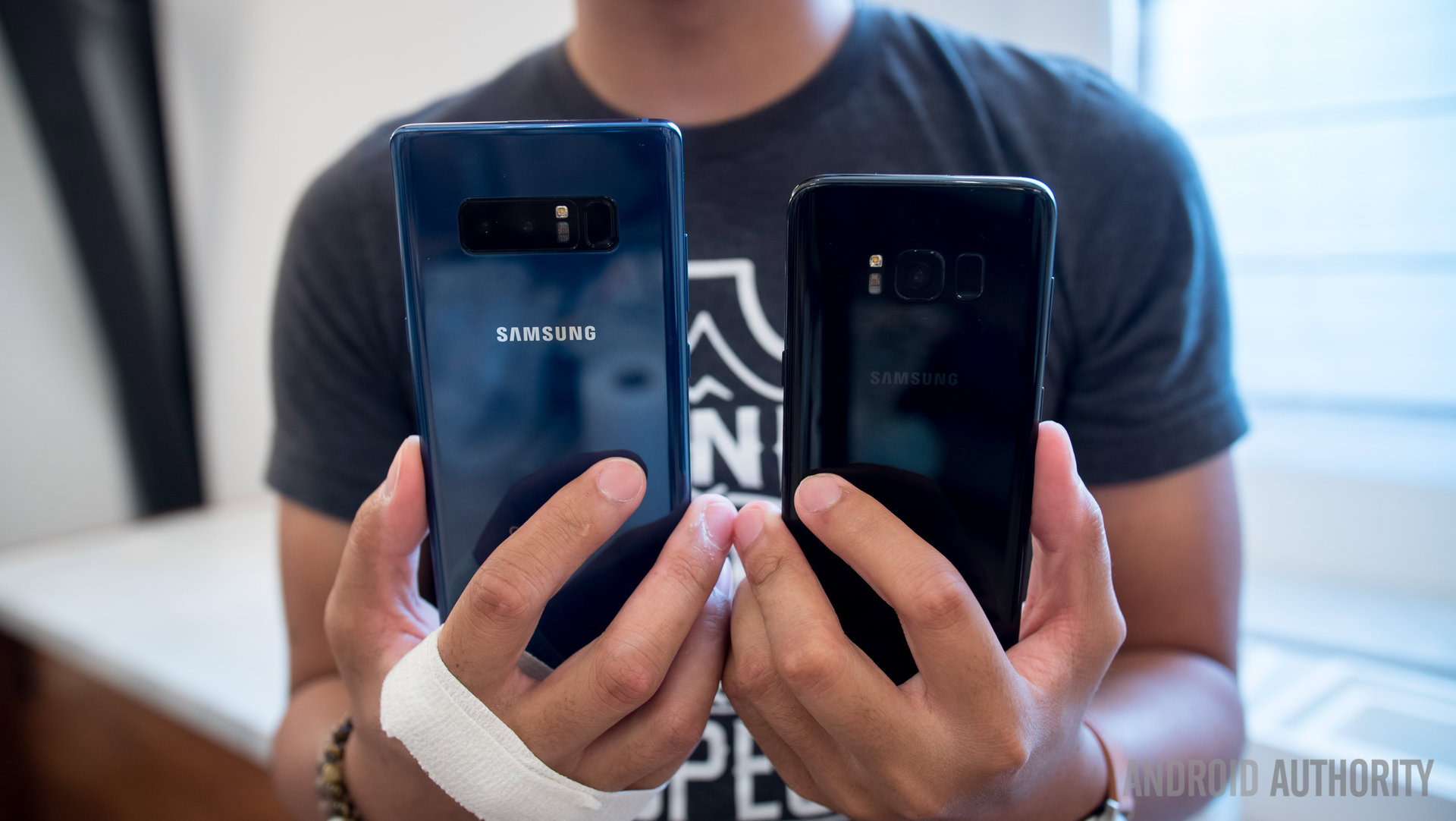
If there’s one area that the Galaxy Note 8 is almost identical to the Galaxy S8 and Galaxy S8 Plus, it’s in the design. The Galaxy S range has often showed what’s to come with the Galaxy Note and this year is no different, with the Galaxy S8 design language forming the blueprint for the Galaxy Note 8.
This means that Samsung has gone for the same taller and wider form factor that we saw introduced with the Galaxy S8, and as a result, slim bezels at the top and bottom of the handset. The screen curves to meet the edge of the handset for an almost-bezelless experience, and the physical home key of last year has been replaced by an under-screen key flanked by on-screen back and recent apps navigation buttons.
One of the most polarising design choices on the Galaxy S8 was the location of the fingerprint sensor to the right of the camera on the rear. Most other Android OEMs have opted for fingerprint sensors located beneath the camera in the rear of the device as it’s much easier to locate, but Samsung has stuck to its guns with the location of the sensor on the Note 8. That said, the sensor is ever so slightly more recessed than on the Galaxy S8, which helps with locating it with your finger. But it’s still an awkward position, especially on such a large device.
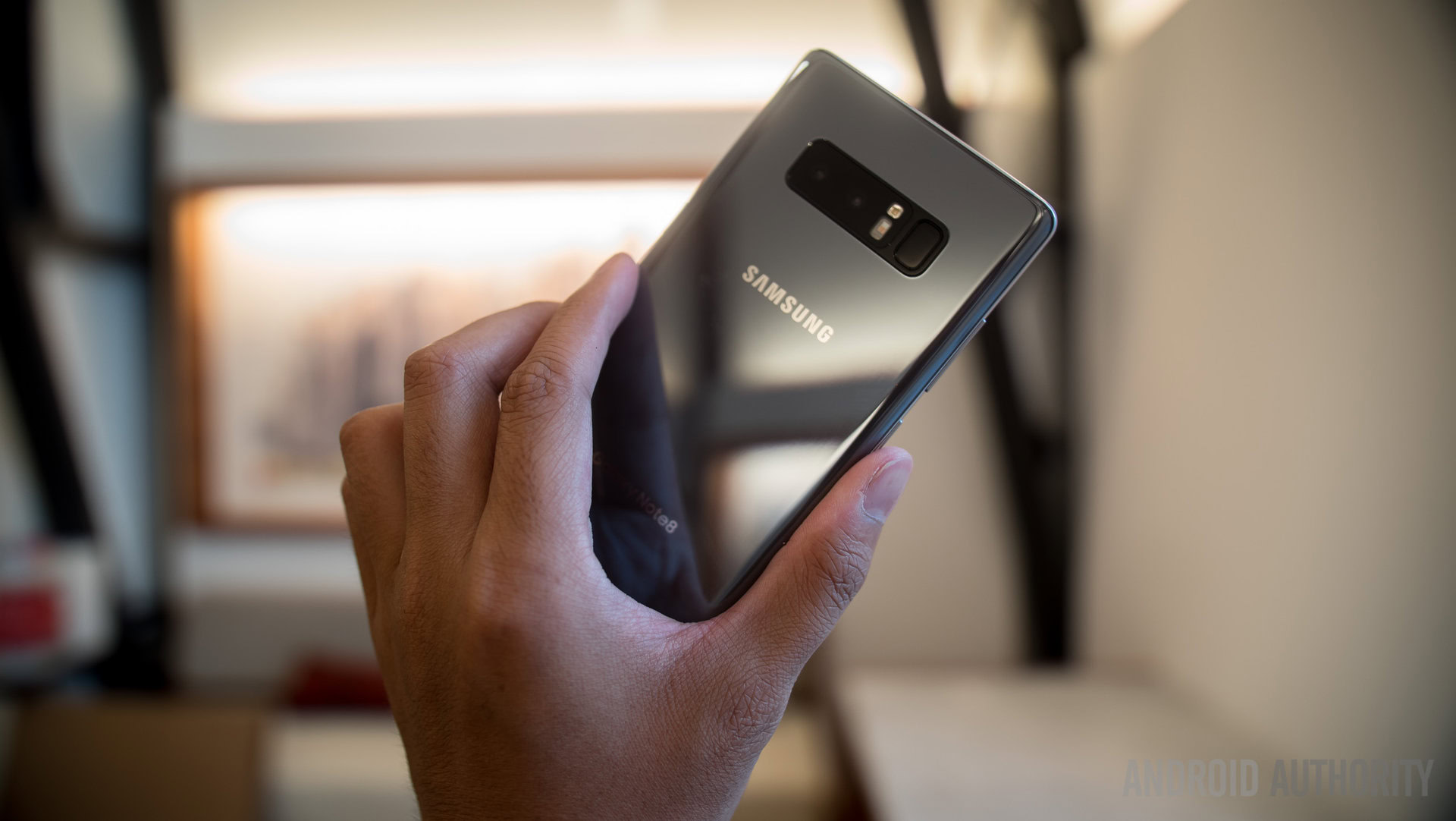
Next to that sensor is one of the largest differences you’ll find, with the new dual camera replacing the single camera array on the Galaxy S8. On the Galaxy S8, the lens and surround is quite square and sits between the heart rate monitor and LED flash on the left, and the fingerprint sensor on the right. On the Galaxy Note 8, this is more rectangular and houses the dual camera, as well as the LED flash and Heart Rate Sensor. The position of the camera on the Note 8 should hopefully mean you’re unlikely to leave fingerprint marks on the camera sensors when hunting for the fingerprint sensor.
Other than this, the design of the Galaxy Note 8 pretty much follows the Galaxy S8, meaning you have the USB Type-C port, single bottom-firing speaker and headphone jack at the bottom. On the right, you have the power button, while on the left you have the volume rockers as well as the Bixby button, which still can’t be reprogrammed to do anything but launch Bixby.

Galaxy Note 8 vs Galaxy S8: Specs
The Galaxy S8 and S8 Plus were the first devices to come with Samsung’s new Infinity Display and sported 5.8 and 6.2-inch displays respectively, while the Galaxy Note 8 comes with a slightly larger 6.3-inch screen. All phones use Samsung’s Super AMOLED Quad HD panel, which is one of the best in the industry, and sport 18.5:9 aspect ratios for a taller and narrower display than in previous years.
The larger display and the need to make a phone that was still usable in one hand, means the Galaxy Note 8 is a little taller than the Galaxy S8 Plus but also a bit wider, resulting in a squarer overall design. The Galaxy Note 8 measures in at 162.5 x 74.8 x 8.6 mm, while the Galaxy S8 Plus measures in at 159.5 x 73.4 x 8.1 mm. The Galaxy Note 8 is also a little heavier in the hand at 193 grams versus the Galaxy S8 Plus (at 173 grams) and the Galaxy S8 (at 155 grams). This increased weight means the phone feels a lot more solid in the hand, and provides a more ergonomic feel.
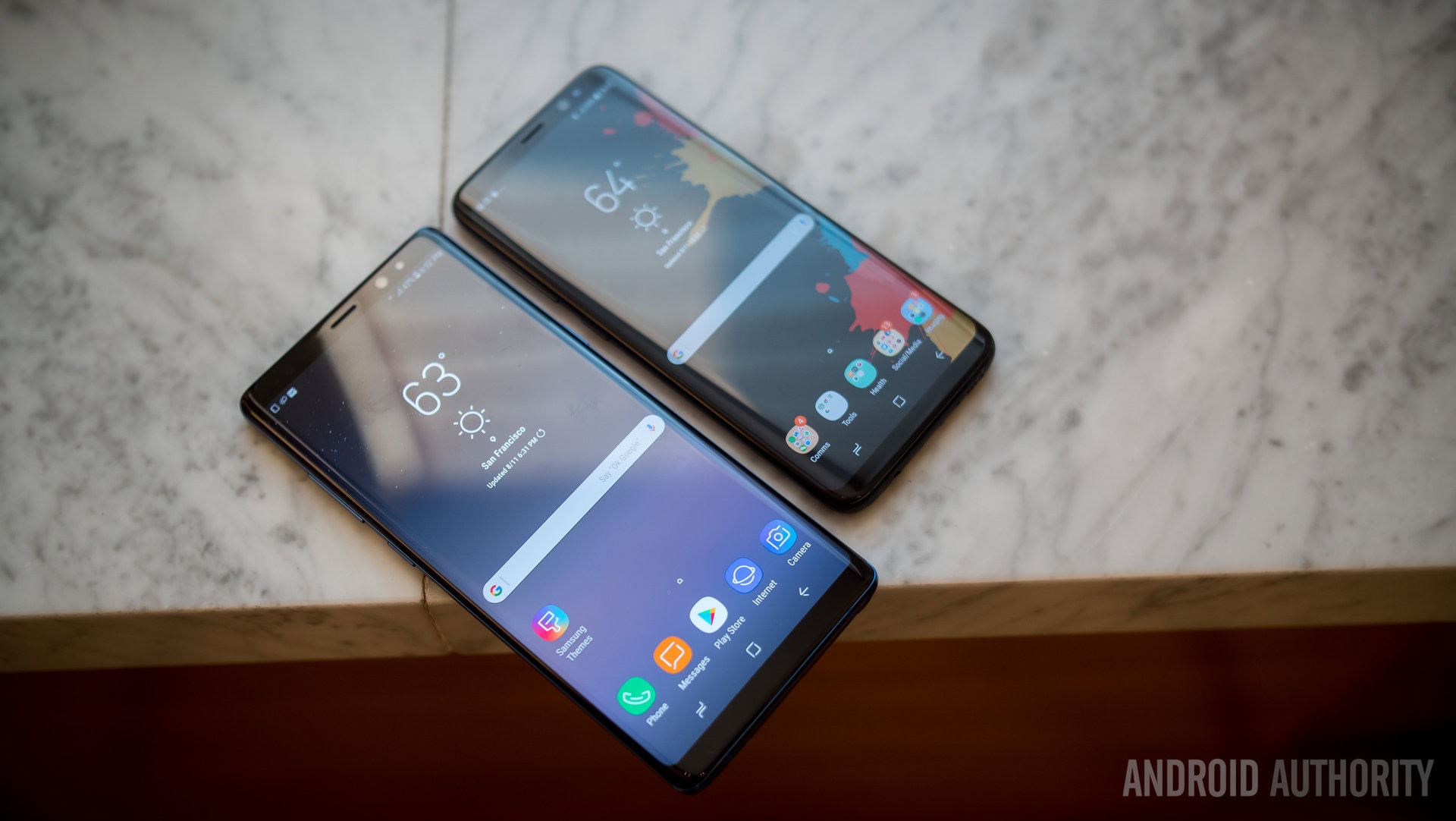
Under the hood, there’s a lot of similarities as well as one key difference: both devices come with either a Qualcomm Snapdragon 835 processor in the US market or Exynos 8895 in the global variant, but while the Galaxy S8 family comes with 4 GB of RAM, the Galaxy Note 8 is the first mass-market Samsung device to bump this up to 6 GB of RAM. This is great to see as it helps differentiate the two families and will also help ensure a smoother multitasking experience on the Galaxy Note 8. The Note 8 will also be available with either 64 GB, 128 GB or 256 GB of expandable storage, while the Galaxy S8 family is limited to just 64 GB of expandable internal storage.
On the back is where the biggest difference between both devices is, with the Galaxy S8 sporting a 12MP dual pixel camera with f/1.7 aperture, and the Galaxy Note 8 bringing the first dual camera on a Samsung flagship device. This dual camera array pairs a 12MP main wide-angle Dual Pixel sensor with f/1.7 aperture with a 12MP telephoto lens that offers f/2.4 aperture. The Galaxy Note 8 is also the first dual camera smartphone to offer optical image stabilisation in both lenses, which should help ensure crisp and clear photos whichever lens you shoot with.
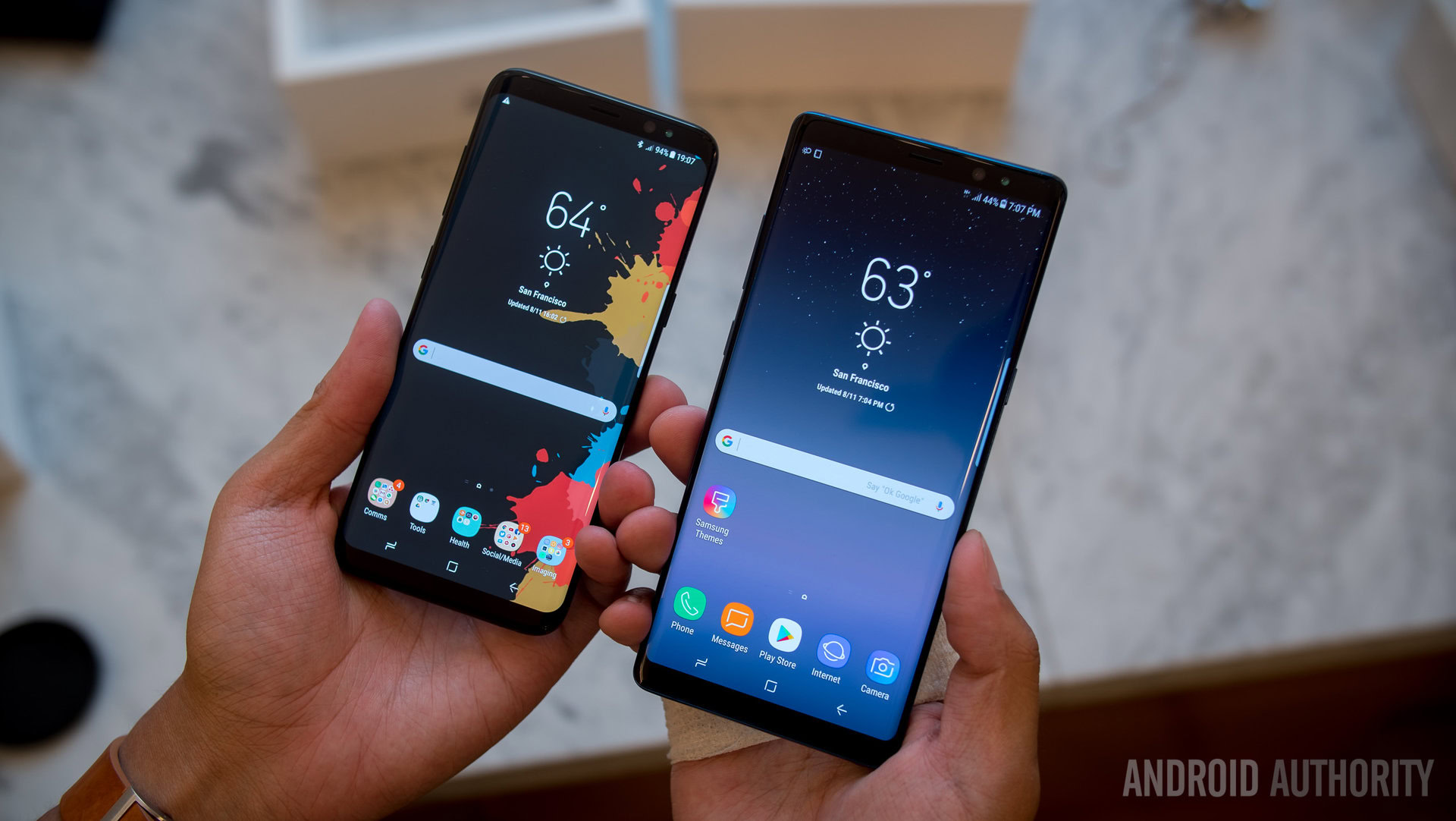
The dual camera on the Galaxy Note 8 also brings a couple of new software features. With the Live Focus feature, you’re able to add depth of field effects, either before you take the shot in the preview or after you’ve captured an image. The camera also adds a new Dual Capture mode that lets you take two pictures at once. In this mode, both rear cameras take two images simultaneously – a close up shot using the telephoto lens and a wide-angle picture that shows the entire background – and you’re able to use either image as both are saved in the gallery.
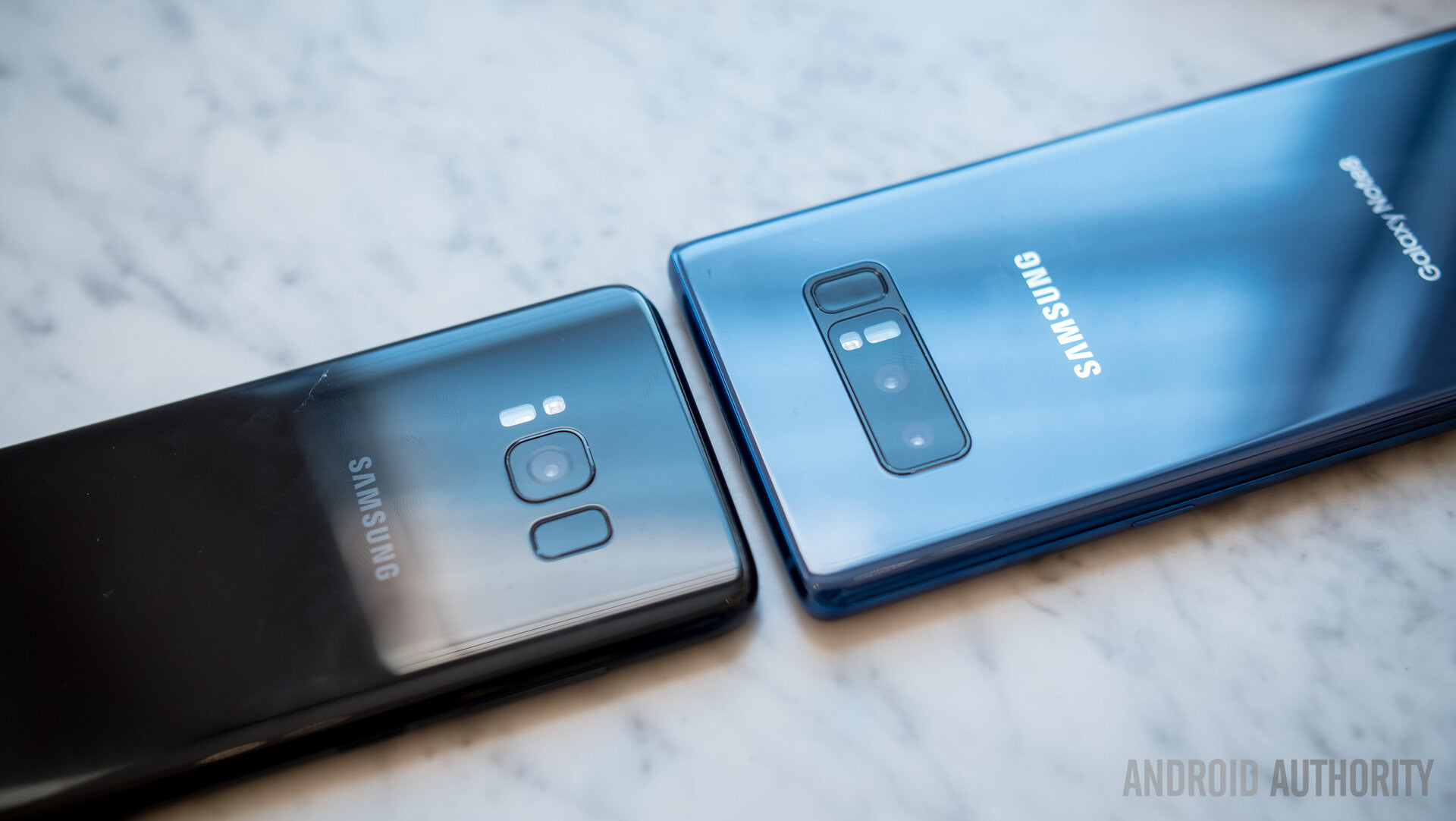
These differences aside, the rest of the devices share a lot of the same feature sets, including IP68 dust and water resistance, NFC and MST for Samsung Pay, an 8MP front facing camera with f/1.7 aperture that can take Quad HD video, Bluetooth 5.0 and Gigabit LTE. There’s also an iris scanner on the front and support for Samsung Bixby and Samsung DeX.
The key issue with the Galaxy Note 7 last year was the battery, which ended up causing the global recall, and with its devices this year, it’s felt that Samsung has played it a little safe. The Galaxy S8 has a 3,000 mAh battery while the Galaxy S8 Plus has a 3,500 mAh battery and the Galaxy Note 8 slots in the middle here, with a 3,300 mAh battery. Of course, all of these devices support fast charging, either using the supplied Adaptive Fast Charger, or using either the Qi or PMA wireless charging standards.
Galaxy Note 8 vs Galaxy S8: Features and software
The software on the Galaxy Note 8 is mostly identical to the Galaxy S8, albeit with a few tweaks and of course, the S Pen. The Galaxy S8 bought an improved software experience that had less bloat and felt more complete, and this has been continued through to the Galaxy Note 8, especially with the new App Pairing feature.
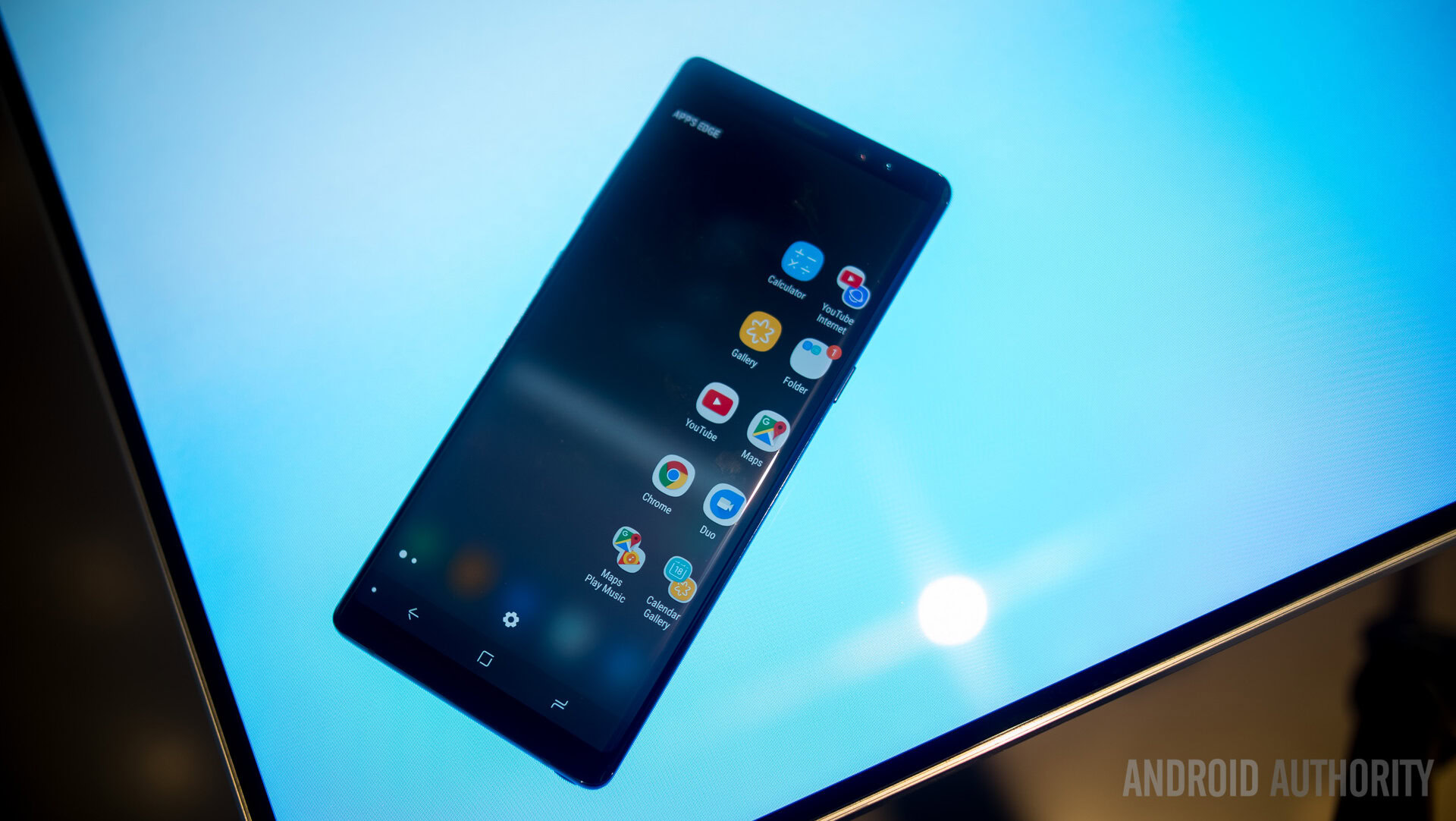
Samsung has often been accused of adding features that don’t really add anything to the overall experience, but the App Pairing feature is one that we can see a lot of people using. Essentially, this feature is designed to make multitasking much more efficient, and allows you to pair two apps together in a shortcut, which can be saved on either the Apps Edge, or the homescreen. When you select the shortcut, both apps are then launched simultaneously into MultiWindow, and this can be really useful if you’re often using the same two apps side-by-side.
The S Pen is where the software on these two devices is truly different. Unlike previous years, the S Pen doesn’t come with a plethora of new features, with Samsung instead opting to enhance the features that already existed. The first of the improvements is in translation, which now allows you to translate an entire sentence rather than word-by-word like with previous Galaxy Note devices. The second improvement comes with the Screen Off Memo, which now supports up to 100 pages of notes, that can also be edited after capture and pinned to the Always On Display.
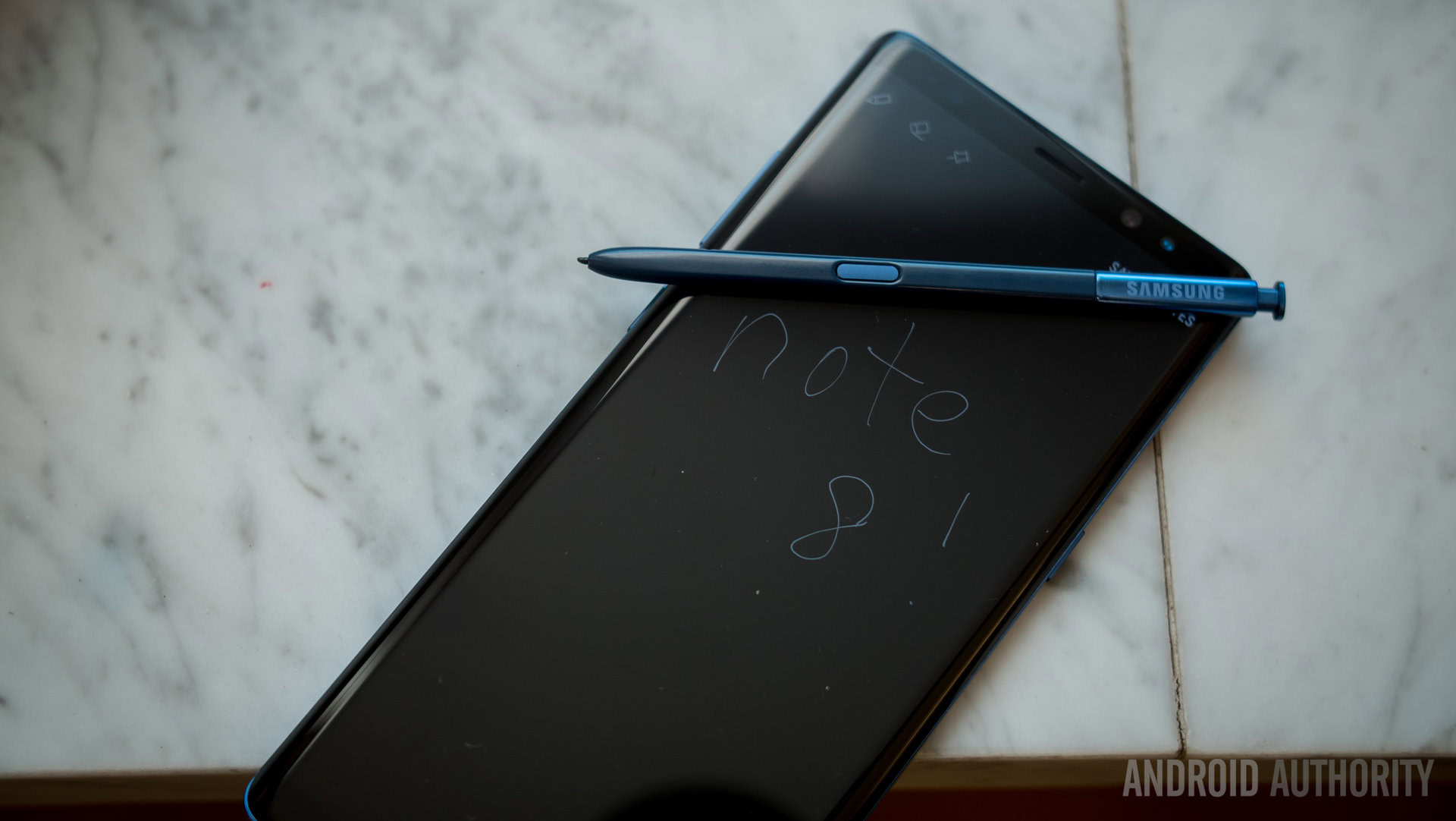
The main new feature in the S Pen is Live Message, which provides a cool way to add fun to your daily messaging. Live Message allows you to hand write a message, add special effects, and save it as an animated GIF that can be shared using any app that supports GIFs. This provides a rather unique way of sending a message to a friend or loved one on a special occasion such as their birthday or a celebration.
Galaxy Note 8 vs Galaxy S8: Which should you buy?
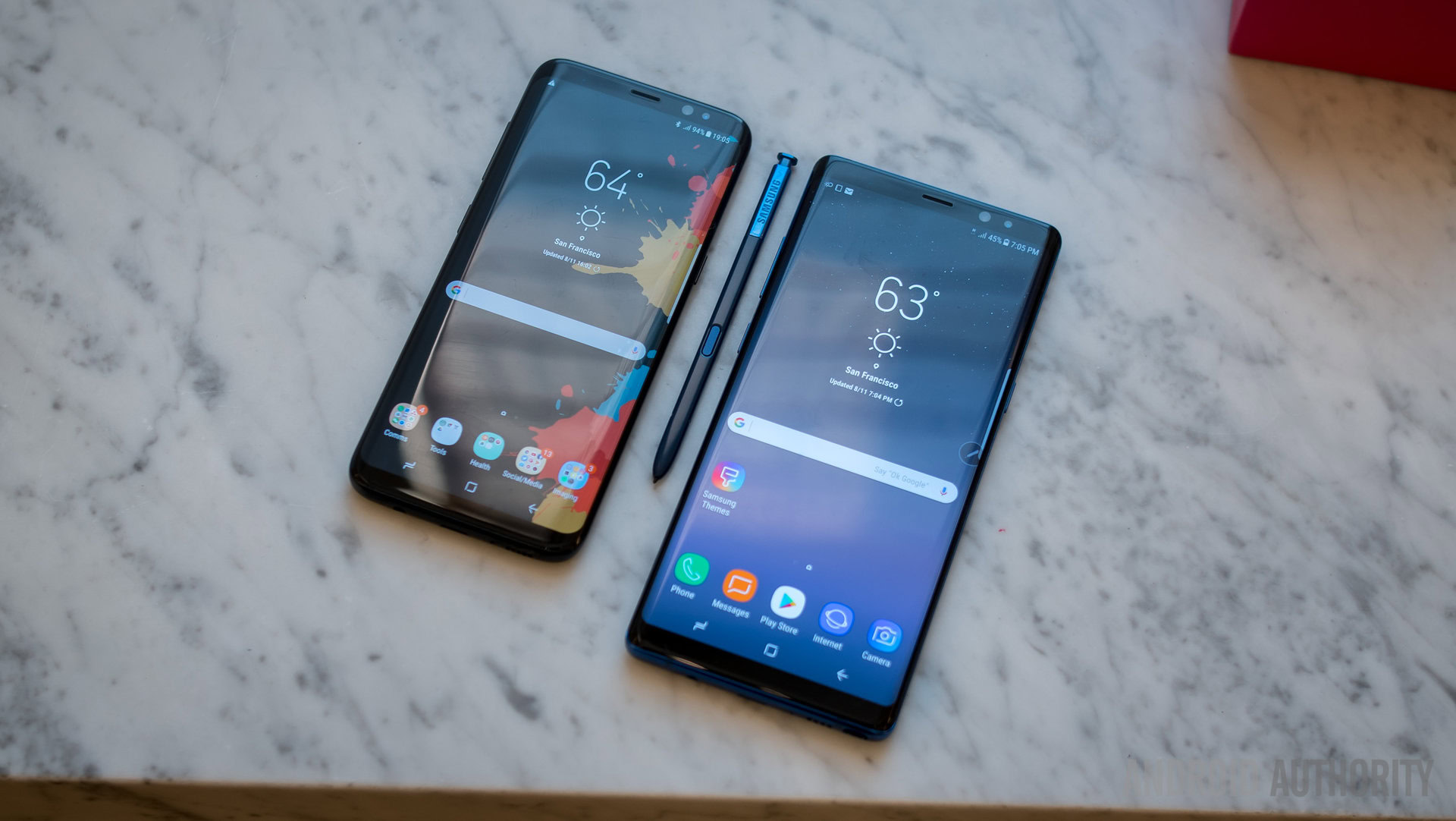
Despite the well-publicised issues with the Galaxy Note 7, Samsung didn’t seem to suffer too much, and the Galaxy S8 and Galaxy S8 Plus were sought after by customers worldwide. With the Galaxy Note 8, Samsung is adding another device to the mix but the unique differences mean this should appeal to a different set of customers.
The Galaxy Note series remains the only major smartphone series to offer a built-in stylus and sets the standard for smartphone productivity. The larger display makes this a multimedia and multitasking powerhouse, while the dual camera offers up new possibilities for photos and video that simply weren’t there with the Galaxy S8.
Don’t miss:
If you have a Galaxy S8 or Galaxy S8 Plus, chances are the differences aren’t enough to make you switch to the Galaxy Note 8, unless you’re looking for the dual camera or the S Pen. However, if you’re looking to buy a Galaxy device and money is no object, the Galaxy Note 8 could be the right device for you, especially if you can see a benefit to the productivity offered by the S Pen and additional RAM, or the multimedia joys of a dual camera and larger display.
Which of these devices would you buy and why? Are there enough differences for the Galaxy Note 8 to capture your interest over its smaller siblings? Let us know your views in the comments below!